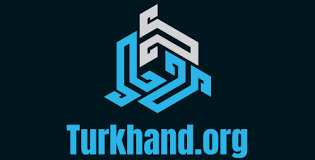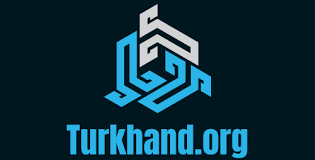In the world of modern manufacturing, CNC machining has completely transformed how parts are made. From aerospace components to automotive brackets and precision-engineered tools, CNC technology delivers accuracy, repeatability, and efficiency that traditional manual machining simply can’t match.
However, not all CNC machines operate the same way. Two of the most common processes used in workshops today are CNC milling and CNC turning. Both play vital roles in manufacturing — but they’re used for different shapes, materials, and design requirements.
If you’re new to CNC machining or trying to decide which process fits your project best, this guide breaks down the key differences between milling and turning, how each process works, and when to use them.
What Is CNC Milling?
CNC milling is a machining process where a rotating cutting tool removes material from a stationary workpiece. The tool moves along multiple axes (X, Y, and Z) to cut and shape the material into the desired form.
CNC milling machines can handle a wide variety of materials, including aluminium, steel, brass, titanium, and plastics, and they’re widely used for creating parts with complex geometries and flat surfaces.
How CNC Milling Works
The process starts with a CAD (Computer-Aided Design) model that defines the part’s shape and dimensions. This file is converted into CAM (Computer-Aided Manufacturing) code — a set of instructions that tells the milling machine how to move.
The material block (or “blank”) is clamped securely on the machine bed. As the cutting tool rotates, it removes small layers of material until the desired shape is achieved.
Types of CNC Milling Machines
-
3-Axis Milling: The most common type, where the cutting tool moves along three axes (X, Y, Z). Ideal for flat parts or simple geometries.
-
4-Axis Milling: Adds rotation around one axis, allowing the tool to approach the workpiece from multiple angles.
-
5-Axis Milling: Offers full freedom of movement, enabling the production of highly intricate and curved shapes — common in aerospace and medical industries.
Advantages of CNC Milling
-
High Precision: Excellent dimensional accuracy for complex parts.
-
Flexibility: Can produce a wide variety of shapes, holes, and slots.
-
Repeatability: Once programmed, the same part can be produced consistently with minimal variation.
-
Surface Finish: Capable of creating smooth, clean surfaces suitable for assembly or finishing.
Best Uses for CNC Milling
CNC milling is ideal for parts that have multiple features, such as holes, pockets, and contours. It’s commonly used for:
-
Metal housings and casings
-
Brackets and structural parts
-
Gears, flanges, and plates
-
Engine components
-
Precision tooling and moulds
Essentially, milling is the go-to process when you need flat, complex, or irregular shapes with tight tolerances.
What Is CNC Turning?
CNC turning works differently — instead of the tool rotating, the workpiece spins while the cutting tool remains stationary (or moves linearly along the rotating part).
This method is ideal for producing cylindrical, round, or conical shapes, making it one of the most efficient ways to create symmetrical components.
How CNC Turning Works
Just like milling, CNC turning starts with a CAD file that’s translated into a CNC program. The material (usually a metal bar or tube) is clamped into a lathe chuck and rotated at high speed.
A single-point cutting tool moves along the surface of the rotating workpiece to remove material, gradually shaping it into the desired form. Turning machines can also drill, bore, or thread parts during the same process.
Types of CNC Turning Machines
-
Two-Axis Lathes: The most basic, used for simple external and internal cuts.
-
Turret Lathes: Equipped with multiple tools that automatically change during the process, improving efficiency.
-
Swiss-Type Lathes: Extremely precise machines used for small, detailed components like watch parts or medical screws.
Advantages of CNC Turning
-
Efficiency: Perfect for producing round parts quickly and consistently.
-
Surface Finish: Creates smooth, uniform surfaces that often require little to no post-processing.
-
Precision: Maintains excellent dimensional control for rotational symmetry.
-
Versatility: Can handle both internal and external features such as grooves, threads, and tapers.
Best Uses for CNC Turning
CNC turning is best suited for parts that are circular in cross-section or require rotation for shaping, such as:
-
Shafts and rods
-
Bushings and spacers
-
Nuts and bolts
-
Connectors and couplings
-
Hydraulic and pneumatic components
In short, if your part is round, symmetrical, or needs concentric accuracy, turning is the better option.
Key Differences Between CNC Milling and CNC Turning
| Feature | CNC Milling | CNC Turning |
|---|---|---|
| Workpiece Movement | Stationary — cutting tool rotates | Rotates — cutting tool is stationary |
| Shape of Parts | Complex, flat, or irregular shapes | Cylindrical, round, or conical parts |
| Material Removal | Achieved through rotating cutters | Achieved through rotating workpiece |
| Machine Type | Vertical or horizontal milling machines | Lathes or turning centres |
| Precision Level | Very high for multi-featured parts | Extremely high for rotational symmetry |
| Common Uses | Brackets, housings, plates, gears | Shafts, bolts, bushings, couplings |
The main difference comes down to movement and geometry — milling is used when a rotating tool shapes a stationary part, while turning shapes a rotating part with a fixed tool.
When to Choose CNC Milling
You should choose CNC milling when your part requires:
-
Flat surfaces, slots, or pockets
-
Multiple holes or patterns
-
Tight tolerances on different faces
-
3D contours or curved surfaces
-
Customisation or small-batch production
Milling is also the preferred option when working with complex shapes that need precise detailing from multiple angles.
When to Choose CNC Turning
CNC turning is the right choice when:
-
The part is long, round, or tubular
-
You need perfectly concentric diameters or threads
-
Speed and consistency are essential for repetitive production
-
The part requires high surface finish without polishing
Turning is often more cost-efficient for producing circular components in bulk or when rotational accuracy is the main priority.
Combining Milling and Turning: Hybrid Machining
In many cases, a component requires both turning and milling. For instance, a shaft might be turned first to achieve its cylindrical body and then milled to add flats, holes, or slots.
Modern CNC mill-turn machines combine both capabilities into a single setup. This reduces setup time, improves accuracy, and allows complex parts to be completed in one operation — an approach increasingly used in industries like aerospace, automotive, and heavy engineering.
Final Thoughts
Both CNC milling and CNC turning are essential machining processes that deliver precision and repeatability. While they share the same goal — creating high-quality, accurately machined parts — each excels in different applications.
-
Choose CNC milling for detailed, multi-surface parts that require precise contours and holes.
-
Choose CNC turning for smooth, circular components that demand rotational accuracy.
Understanding the difference between these two techniques ensures you select the most efficient and cost-effective process for your project.
At Kirmell, our precision engineering capabilities include both milling and turning operations, enabling us to handle everything from custom prototypes to large-scale production runs. By combining experience, advanced CNC machinery, and UK-based manufacturing expertise, we deliver components that meet the highest industrial standards every time.



